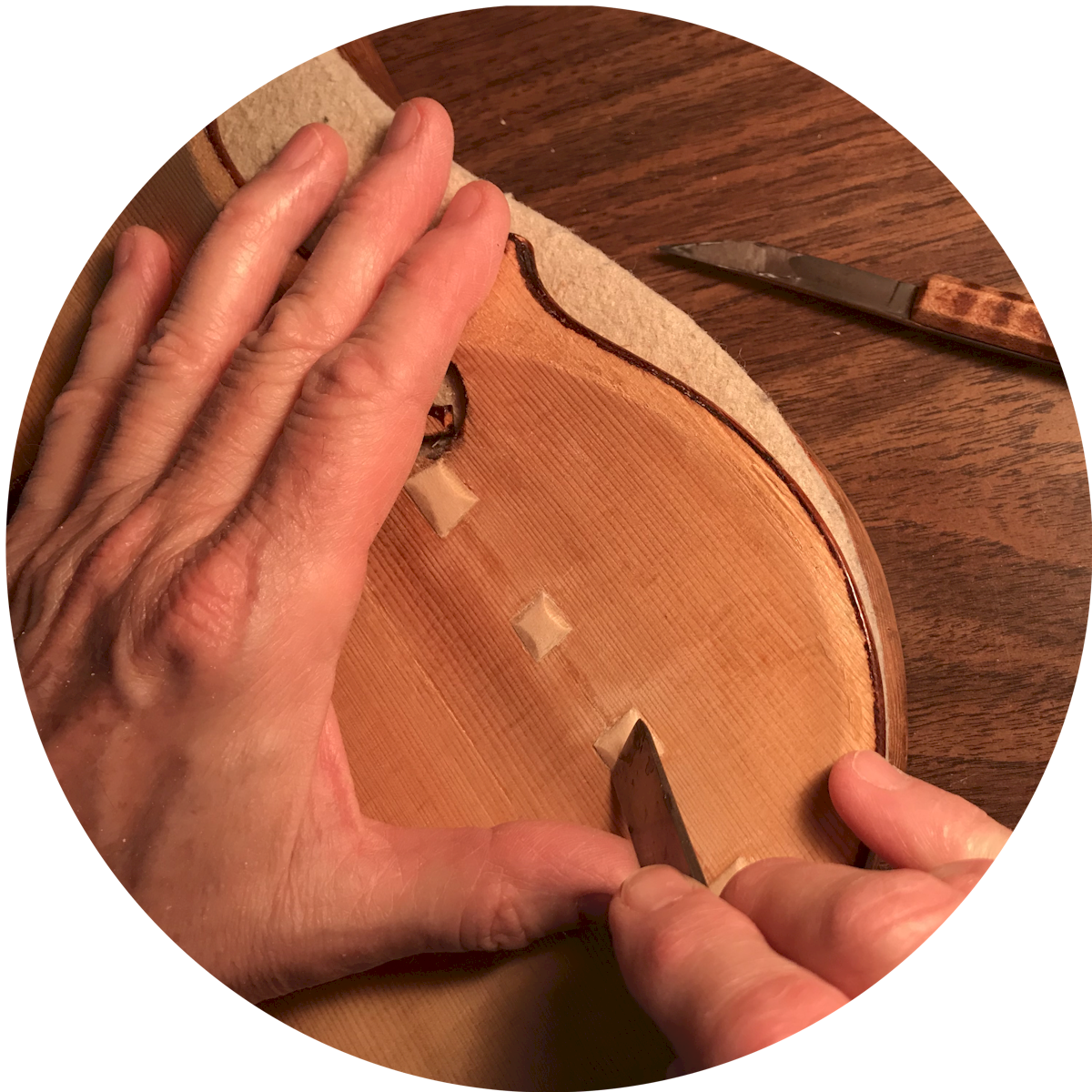
If you have a problem with your violin (or viola or cello), the best course of action is generally to have it looked at by a professional. Having it looked at early, and before you attempt a home repair generally saves you time, money and wear and tear on your instrument. There are basically three levels of work that can be undertaken on a violin.
Maintenance is the basic level and includes new bridges, gluing of open seams, dressing worn and grooved finger boards, etc. These are things that have to be done on occasion no matter how well anyone cares their instrument.
Repairs are sometimes needed when an instrument is damaged by accident, weather or some other neglect. This would include gluing cracks, restoring battered edges, tightening loose necks, stabilizing cracked peg boxes and so forth.
Restoration is an often overused term. I sometimes am presented with “Grandpa’s” fiddle which was “restored” at the local piano/ drum/ guitar store by attaching a new bridge blank with no fitting and a new set of baling wire strings. If the person hasn’t already spent more on this “Strad” than it is worth, it now needs a set-up, possibly some repairs & a good bath.
If I use the term “restoration” I mean one or more extensive repairs to a badly damaged or heavily worn old instrument. This would include a sagging top, sound post patch, neck graft, warped ribs, edge doublings or replacements, etc. Often one violin can need all of the above to put it back into playing condition. Almost anything can be done but a good deal of the determination depends on the cost to value ratio of the item at hand.
While I enjoy the challenge of major projects, I sincerely hope you have either found a damaged but fine quality relic for a pittance & you are happy to pay for whatever needs to be done or, if your favorite daily companion has had an accident, it only needs a bit of glue & touch up varnish to rebalance the scales of the universe.